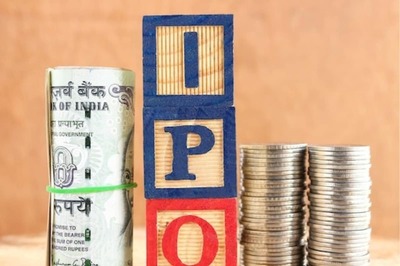
views
For those who regularly follow the Railway budgets, the contrast between the boastful optimism of former minister Lalu Prasad Yadav and the candid honesty of the incumbent, Mamata Banerjee, is unmistakable. Take, for instance, her confession on the excruciating shortage of goods wagons. The Railways simply doesn’t have enough wagons to carry all the freight that comes to it for loading. It routinely turns down business to the detriment of its own financial health and the country’s economic growth.
"Rising demand for coaches, locos and wagons cannot be met immediately," Banerjee gloomily predicted in her Budget speech for 2011-12. She pointed out that the capacity for wagon manufacture was limited in India and even some of the required components weren’t made in the country. Her allocation of Rs 13,820 crore for the purchase of 18,000 wagons during the year is a record for the Railways but still woefully inadequate to cover the ballooning shortfall.
Why Is it a Big Deal?
For an economy growing at 9 percent per year, freight traffic in India stands at over 3 billion tonnes. And it is growing by more than 10 percent. This means, an additional carrying capacity of about 300 million tonnes must be created every year to sustain that growth.
Moving goods by rail is less polluting and more economical than road transport. India loses as much as $ 45 billion a year due to poor logistics infrastructure, according to a report by McKinsey Quarterly. This wastage could be cut by half and fuel needs reduced by 15-20 percent if the country fixes its transport infrastructure and moves more goods by rail, say Rajat Gupta and Thomas Netzer in the McKinsey report.
But the candid confessions of Mamata Banerjee do not reveal the way the Railways has been bungling up this national priority by letting the wagon shortfall increase each year. Over the past three decades, it has been losing traffic to the less efficient road transport to the extent that only one third of the country’s freight traffic is carried by rail today. And McKinsey researchers predict it will fall further to 25 per cent.
Even more ludicrous is the way the Railways has been blocking private sector participation in freight movement. Billions in private investment is waiting to come into the sector but the Railways, fearful of losing business to private rivals, has been blocking it with an ever-growing list of restrictions.
"The Railways ought to realise that the worst case scenario for them is not losing traffic to these private players but the truckers," says infrastructure expert Partha Mukhopadhyay.
One Railways, Two Voices
The story began in 1980 when the national rail transporter decided to cut down the loading of ‘piecemeal’ goods like textiles, milk powder, flour, polymer granules and chemicals. The idea was to use its limited wagon capacity to carry more coal, iron and steel, petroleum and other bulk commodities required by heavy industries and energy utilities.
With a focus on increasing its market share in bulk commodity transport, the Railways began to refuse to carry piecemeal goods. On the other hand, it would have been anathema in that socialist era to think of allowing private industry to serve the business the Railways no longer wanted. So these smaller customers had to move their freight through road. Since then, the Railways has been unable to get them back.
Five years ago, the Railway ministry thought it had found a solution to the deficit in its capacity in the freight segment when it invited the private sector to run container trains. A flurry of investment followed. As many as 16 companies paid over Rs. 640 crore as licence fees and invested another Rs. 1,250 crore to buy 96 rakes (goods trains minus engines). Under the policy, they would own the trains, while the Railways would supply the engine and crew. The contract would last 20 years. It all looked set for a major expansion in carrying capacity.
The unpleasant surprise came when the Railways started laying down the ground rules for the private sector. It decided to restrict the private partners from carrying coal, coke and other minerals. It also raised haulage charges repeatedly. Coupled with poor infrastructure, this rendered the freight movement business much less attractive for the private players.
"On the one hand, the Railways wanted the private players to bring more traffic to the rail sector and at the same time, they do not support us," says a top official at a logistics company. "Many of us have decided to put all our investment plans in the business on hold until the ministry hears us."
One example of how the Railways’ apathy is hurting industry is the cement sector. Every year, during January and February, the prices of cement shoot up across the country even when there is a surplus in production. "The Railways are unable to send the required number of wagons at the start of the year as there is a massive requirement for transport of food grains and therefore only a limited number of wagons are available to carry cement during the two months," says Sanjay Ladiwala, president of Cement Stockists and Dealers Association of Bombay.
Now, cement is such a low-value commodity compared to its weight that transport costs are the crucial difference between profit and loss for the producer. The Railways has simply raised the charges it levies on private container train operators transporting cement by about 200 per cent. This, the operators say, has rendered it unviable for the producer to move cement by container trains, which could have augmented the Railways’ capacity to carry the commodity on short routes.
The Red Signal
Private container train operators make at least four complaints against the Railways. One, the concession agreements they signed at the time of getting the licences did not mention that only some of the freight would be available to them. They had made the bet based on the possibility that they would be able to carry all types of bulk cargo. So, the midway change that restricted them from carrying some minerals is an unfair measure.
Two, the increase made by the Railways in its haulage charges, in the range of 170-200 per cent for cement, iron and steel, alloys and metals, is too steep, they say.
Three, the Railways also collects a charge on empty, returning containers at 65 percent of the base rate. "This makes life difficult on the domestic sector which is not assured of a regular supply of cargo at all points on the route [a company] plies the trains," says the private sector executive.
Four, the Railways has also provided land at a subsidised cost to Concor to set up freight terminals at 62 locations over the years. Private players had no such benefit.
Thus, logistics companies have to endure the strange experience of dealing with one organisation — the Railways — that is a customer, a competitor and the regulator all rolled into one.
The Railways’ Compulsions
It is not that the measures by the Railways are entirely arbitrary. It has its own compulsion to balance its social mandate to keep train travel cheap for millions of passengers and the business mandate to move more and more freight. It means keeping the most lucrative cargo for itself so that it has enough money to run passenger trains. "The passenger services are heavily subsidised by the freight traffic," says J.P. Batra, former chairman of the policy-setting Railway Board. "The Railways needs to earn on these commodities if the passengers want to travel cheap." He also says the private players must fully exploit the potential in the goods they are allowed to carry, before asking for more. "Look at the number of goods that are carried by trucks in India. Do you think there is a shortage of cargo?"
A Railway Board officer says he is amazed to hear the private companies complaining. "We estimate that there is an additional 400 million tonnes of piecemeal traffic that the private players can carry. They only need to invest in infrastructure and formalise business plans and specialise in particular commodities. The money is there to be made."
He also denies charges that the Railways favour Concor. "Concor has built its business over 20 years and we cannot take back the land that we have provided them. In fact, the private companies need to realise that we have stopped providing new terminals even to Concor in order to ensure that there was a level playing field," the official says.
But the truth remains that the Railways hasn’t embraced private participation fully. And there is good reason why it should.
Every year, the Railways needs to carry an average of 100 million tonnes of incremental freight traffic to achieve its ambition of carrying about two billion tonnes of freight in 2020. To fully meet the demand, it needs 439 new goods trains with 21,978 wagons in all. But the country has a total wagon production capacity of only 18,000. Where will the extra 4,000 come from?
But it is also time for the government to rethink its cross-subsidisation policy. It has to evaluate the cost the growing economy pays in the form of lost freight traffic to keep passenger travel cheap. It will take more than candid confessions to break this vicious cycle.




















Comments
0 comment